Introduction to Meditation
Meditation is one of the four fundamental components of Qigong along with movement/posture, self-massage, and breathing. Qigong (and it's most popular moving form, Tai Chi) is an ancient practice which belongs to new category of exercise called "meditative movement". Meditation in combination with breathing and slow, gentle movements (although there are many forms of Qigong that do not involve movement) affects humans physically and psychologically through relaxation techniques which reduce stress through modulation of the autonomic nervous system. The practice has a proven effect upon quality of life, self-esteem, relationships, the ability to recognize and handle stress, pain relief, blood pressure, cardiovascular health, and more.
called "meditative movement". Meditation in combination with breathing and slow, gentle movements (although there are many forms of Qigong that do not involve movement) affects humans physically and psychologically through relaxation techniques which reduce stress through modulation of the autonomic nervous system. The practice has a proven effect upon quality of life, self-esteem, relationships, the ability to recognize and handle stress, pain relief, blood pressure, cardiovascular health, and more.
Qigong is moving meditation. "Moving" means either physical movement or movement of energy internally, even if no musculo-skeletal movement is occurring. The integration of interoception, proprioception, and mindfulness is a key component of the practice. You learn to create moments of peace within activity. All of this comes on a foundation of breathing.
Awareness is the essence of meditation. https://www.youtube.com/shorts/MXABaBB9uc4
How Contemplative Practices Promote Health and Well-Being.
[Global Wellness Institute: What is Mindful Movement? First Global Data on a Growing, $29 Billion Wellness Segment - June 28, 2021]
Mindfulness is both a type of meditation and a key component of Qigong. Mindfulness can be defined as presence, or moment to moment awareness. Paying attention to the present moment as life unfolds moment to moment is called "non-doing", or "being". The practice of being is an attitude (i.e. an intention) to be in the present moment on purpose. The attitude that is brought to the meditation will determine its long-term value and whether it leads to a changed state of mind.
Meditation in general and mindfulness in particular are extremely valuable practices for health. However, they are necessary but not sufficient. The profound power of Qigong comes from its incorporation of breathing (not all meditation or mindfulness includes any particular breathing discipline) and movement.
Committment to practice requires effort and consistency over time in order to achieve best results. Note that meditation is a part of any Qigong practice session, but the most enduring benefit is obtained by integrating Qigong into your daily life.
Meditation is increasingly being used in clinical situations for a range of conditions, and there is a growing scientific evidence base of its benefits. Qigong meditation and mindfulness training cultivates body awareness and promotes self-management of illness.
Functional Connectivity of Prefrontal Cortex in Various Meditation Techniques - A Mini-Review. Meditation is a practice of concentration and relaxation. In philosophical terms, it is a process of gaining self-consciousness. Although there is diversity in meditation (Mindfulness, compassion, transcendental, and focused attention meditation), interventions show that meditation practices improve prefrontal cortex (PFC) functions like cognition, self-awareness, attention, and memory and reduce psychological symptoms. These results are thought to be due to meditation increasing functional connections of different brain regions. fMRI findings show that meditation practices are associated with increased neural function and processing, default mode network, gray matter volume, and functional coupling in the brain area related to different parts of PFC. PFC's functional connectivity is associated with increased attention, working memory, cognitive control, executive control, emotion regulation, counteracting adverse effects, self-perception, and self-compassion. Furthermore, PFC's functional connectivity decreases anxiety, depression, perceived stress, negative emotion, and hyperarousal symptoms. We suggest a positive theoretical correlation between meditation and the functional connectivity of the prefrontal cortex. Altered prefrontal connectivity is seen in some neurological and psychosocial disorders. Therefore meditation can also play an influential role in treating these disorders. PMCID: PMC10026337.
Mindfulness-Based Stress Reduction vs Escitalopram for the Treatment of Adults With Anxiety Disorders: A Randomized Clinical Trial. PMID: 36350591. See also: Mindfulness meditation reduces anxiety as much as a common antidepressant drug, study finds and https://www.dailymail.co.uk/health/article-11408829/Mindfulness-meditation-effective-LEXAPRO-alleviating-anxiety-study-finds.html
Mindfulness exercises can be as effective as anxiety drugs, study shows.
Harvard Neuroscientist: Meditation Reduces Stress and Literally Changes Your Brain.
Meditation may help you catch mental mistakes - Harvard Health. Meditating for 20 minutes can help people recognize mental mistakes and, perhaps, avoid them in the future, according to a recent study.
Meditation is proven to reduce stress. “This work shows that meditation influences the regulation of the HPA axis, which may reduce stress levels. Although the scope of research is currently limited, it seems that meditation may also influence the RAA system, corresponding with improved well-being and changes in hormonal stress. The RAA (Renin-Angiotensin-Aldosterone (RAA) system.) system regulates blood pressure, electrolytes and fluid balance. Meditation is becoming increasingly popular, with over a quarter of British adults practising meditation as a therapy. Another key finding was linked with the HPT axis, which determines and regulates thyroid hormone production and is particularly associated with depression and anxiety."
Long-Term and Meditation-Specific Modulations of Brain Connectivity Revealed Through Multivariate Pattern Analysis. Neuroimaging studies have provided evidence that extensive meditation practice modifies the functional and structural properties of the human brain, such as large-scale brain region interplay, and in particular, the Anterior Salience and the Default Mode networks. Focused attention and open monitoring meditation styles impact large-scale brain networks. Extensive meditation practice modulates large-scale brain networks, and the different meditation styles differentially affect connections that subserve style-specific functions. PMID: 36977909.
Study quantifies changes in stress after meditation. "Through a new method of processing HRV [Heart Rate Variability] time series data, the researchers developed a way to measure the change in the level of stress provided by meditation. This measure assigns a number to the level of variability of heartbeat interval time series before and during meditation. This number indicates precisely how much stress is alleviated by control of the heart-brain coupling through meditation...Historically, one purpose of meditation has been to reduce stress, however, the Army's long-term goal is to use it to mitigate the effects of post-traumatic stress disorder, or PTSD. West said the potential for this to succeed has been dramatically increased with the new ability to quantify the degree of effectiveness in stress reduction using different meditation techniques."

Meditation is beneficial for brain preservation, effectively protecting against age-related atrophy with a constantly slower rate of brain aging throughout life.
 Dynamic Change of Awareness during Meditation Techniques: Neural and Physiological Correlates.
Dynamic Change of Awareness during Meditation Techniques: Neural and Physiological Correlates.
20 Scientific Reasons to Start Meditating Today.
 Movement-based embodied contemplative practices: definitions and paradigms. The experience of one's self in the world as a cognizant being does not solely emerge from neural activity within the brain. Instead, it involves a complex interplay of brain, body and environment, and the seamless integration of interoceptive, proprioceptive (including vestibular), kinesthetic, tactile, and spatial information. Pubmed 24782738.
Movement-based embodied contemplative practices: definitions and paradigms. The experience of one's self in the world as a cognizant being does not solely emerge from neural activity within the brain. Instead, it involves a complex interplay of brain, body and environment, and the seamless integration of interoceptive, proprioceptive (including vestibular), kinesthetic, tactile, and spatial information. Pubmed 24782738.
 The neurobiology of focus and distraction: The case for incorporating mindfulness into leadership. Two main neural circuits are contrasted: the mind-wandering default mode circuit and the attentional central executive system. These two systems act in an antagonistic pairing, where the degree of toggling between systems is associated with the degree a person can sustain focus and filter out unwarranted distractions. Excessive multitasking appears to compromise the neural switch of these two systems, thereby diminishing our focus and concentration. In contrast, mindfulness practice is shown to have the opposite effect by enhancing the neural switch, thereby enhancing leadership focus that can lead to greater flexibility, foresight, regulation, and creativity. To conclude, leaders who are excessively distracted, such as with multitasking, may be compromising cognitive brain functioning, while engaging in mindfulness may replenish the brain and thereby enhance leaders' ability to sustain focus and tap into higher cognitive functioning.
The neurobiology of focus and distraction: The case for incorporating mindfulness into leadership. Two main neural circuits are contrasted: the mind-wandering default mode circuit and the attentional central executive system. These two systems act in an antagonistic pairing, where the degree of toggling between systems is associated with the degree a person can sustain focus and filter out unwarranted distractions. Excessive multitasking appears to compromise the neural switch of these two systems, thereby diminishing our focus and concentration. In contrast, mindfulness practice is shown to have the opposite effect by enhancing the neural switch, thereby enhancing leadership focus that can lead to greater flexibility, foresight, regulation, and creativity. To conclude, leaders who are excessively distracted, such as with multitasking, may be compromising cognitive brain functioning, while engaging in mindfulness may replenish the brain and thereby enhance leaders' ability to sustain focus and tap into higher cognitive functioning.
 Concentrative (Sahaj Samadhi) meditation expands subjective time. The findings suggest that subjective expansion of time is most likely a general effect of attentional enhancement irrespective of the type of meditation practice.
Concentrative (Sahaj Samadhi) meditation expands subjective time. The findings suggest that subjective expansion of time is most likely a general effect of attentional enhancement irrespective of the type of meditation practice.
Why Doing Nothing Is the Key to Happiness. Attention and focus are hard to come by. Starbucks built a $13 billion business because we need help paying attention. Psychiatrists increasingly diagnose "adult attention deficit disorder" and prescribe Ritalin for grownups who can't focus or pay attention. But are coffee and prescription speed the answers to our modern distractions? What matters most in life is the quality of our experience, the ability to be awake to what is real and true in our lives, for the difficult and the happy times, to be awake to each person we touch, to our own experience, to this very moment, to the simple sweet and alive gifts of a smile, a kind deed, the breeze on our skin, the firefly flickering the early summer night. The point of meditation, of doing nothing, is not an end in itself but a way to calm the mind, to see the true nature of things, and reduce the impact of suffering -- while increasing love, kindness, wisdom, fearlessness and sympathy. From that stillness, your life becomes more rich, your actions more clear, your words more direct and powerful and your capacity to be fully engaged in life enhanced. It is not a retreat from life, but a way to go fully into it and cultivate your own power and happiness. The article could be titled: 'Why Doing Qigong Is the Key to Happiness".
 Meditation helps patients with medically unexplained symptoms. Awareness and acceptance of painful symptoms and emotions are key factors in the process of change in patients with persistent medically unexplained symptoms. Change of unhelpful behavioral patterns and increased self-care and self-compassion can also result from this process.
Meditation helps patients with medically unexplained symptoms. Awareness and acceptance of painful symptoms and emotions are key factors in the process of change in patients with persistent medically unexplained symptoms. Change of unhelpful behavioral patterns and increased self-care and self-compassion can also result from this process.
Study Revealed That Vajrayana Meditation Techniques Associated with Tibetan Buddhism Can Enhance Brain Performance. Contrary to popular belief, not all meditation techniques produce similar effects of body and mind. Indeed, a recent study by researchers from the National University of Singapore (NUS) has demonstrated for the first time that different types of Buddhist meditation – namely the Vajrayana and Theravada styles of meditation - elicit qualitatively different influences on human physiology and behaviour, producing arousal and relaxation responses respectively.

The Effects of Stress and Meditation on the Immune System, Human Microbiota, and Epigenetics. Psychological stress typically triggers a fight-or-flight response, prompting corticotropin-releasing hormone and catecholamine production in various parts of the body, which ultimately disturbs the microbiota. In the absence of stress, a healthy microbiota produces short-chain fatty acids that exert anti-inflammatory and antitumor effects. During stress, an altered gut microbial population affects the regulation of neurotransmitters mediated by the microbiome and gut barrier function. Meditation helps regulate the stress response, thereby suppressing chronic inflammation states and maintaining a healthy gut-barrier function. The current research team recommends the integration of meditation into conventional health care and wellness models. More information on Qigong and the Microbiome: Food Is Medicine.


Is Mindful Reflective Practice the way forward to reduce medication errors? Considering the benefits of mindfulness, the authors suggest that healthcare professionals should be encouraged to develop their practice of mindfulness. This would not only be beneficial in relieving stress, increasing attention levels and awareness, but it is believed that the integration of mindfulness and reflective practice in a 'Mindful Reflective Practice' could minimise some of the individual factors that lead to medication errors.
Breathing In vs. Spacing Out. Are mindfulness and creativity mutually exclusive? Implicit learning underlies all sorts of acquired skills and habits, but it occurs without conscious awareness. The trick is knowing when mindfulness is called for and when it's not. We know that being mindful is really good for a lot of explicitly cognitive functions. But it might not be so useful when you want to form new habits.
Spiritual Qigong includes integrating meditation nto one's life 24x7. Through meditation the relationship between you and your life changes and deepens. You gain new insight and perceptions on living your life. However, mediation is not something to be practiced in ascetic isolation from the rest of your daily routine. In fact it is the integration of moving meditation practices such as Qigong into the fabric of daily life that most directly result in significant changes and improvements in health and wellbeing.
7 Myths of Meditation. Deepak Chopra debunks some of the more common myths surrounding the practice of meditation.
American Mindfulness Research Association. Mindfulness is a quality of human consciousness characterized by an accepting awareness of and enhanced attention to the constant stream of lived experience. Being mindful increases engagement with the present moment and allows for a clearer understanding of how thoughts and emotions can impact our health and quality of life. Mindfulness can be cultivated through meditation practice. The AMRA Mindfulness Research Guide is a comprehensive electronic resource and publication database that provides information to researchers, practitioners, and the general public on mindfulness.
Buddhism and the Blues - Buddhist psychology's core techniques of meditation and awareness may have much to offer ordinary Westerners. To most people Buddhism is an ancient Eastern religion, although a very special one. It has no god, it has no central creed or dogma and its primary goal is the expansion of consciousness, or awareness. But to the Dalai Lama, it's a highly refined tradition, perfected over the course of 2,500 years, of analyzing and investigating the inner world of the mind in order to transform mental states and promote happiness. "Whether you are a believer or not in the faith," the Dalai Lama told a conference of Buddhists and scientists at the Massachusetts Institute of Technology, you can use its time-honored techniques to voluntarily control your emotional state.
Silencing the Monkey Mind: For those of us engaged in any form of meditative efforts, such as bio energy, traditional chi gung, or even Zen meditations, each of us can personally attest to the brain’s “wandering” tendencies. Long ago, Buddhist monks created an analogy describing the wandering activity of the brain akin to a “chattering monkey”.
Meditation Makes You More Creative. Open Monitoring versus Focused Attention meditation.
Meditation and Health: An Annotated Bibliography. A short overview of meditation.


 called "
called "

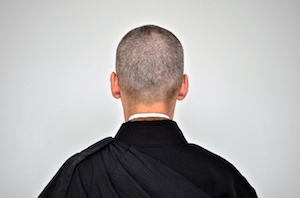

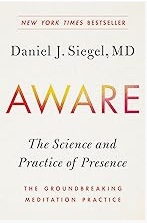


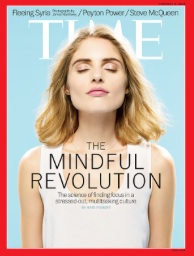
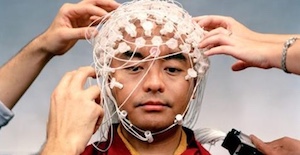
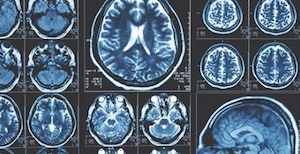
 . NCCAM is planning a series of blog posts to highlight some exciting work from its research portfolio. Currently one intriguing area is the effect of meditation on the brain. Meditation can be viewed as a kind of ‘mental exercise.’ New insights are coming from incorporation of brain-imaging studies into meditation research. In particular, studies suggest that meditation is accompanied by changes in activation of select regions in the brain, particularly the amygdala, a region associated with processing of emotion. A new NCCIH study goes further and concludes that the changes in brain function in the amygdala seen during meditation are persistent, enduring even outside meditation sessions. Research spotlight:
. NCCAM is planning a series of blog posts to highlight some exciting work from its research portfolio. Currently one intriguing area is the effect of meditation on the brain. Meditation can be viewed as a kind of ‘mental exercise.’ New insights are coming from incorporation of brain-imaging studies into meditation research. In particular, studies suggest that meditation is accompanied by changes in activation of select regions in the brain, particularly the amygdala, a region associated with processing of emotion. A new NCCIH study goes further and concludes that the changes in brain function in the amygdala seen during meditation are persistent, enduring even outside meditation sessions. Research spotlight:
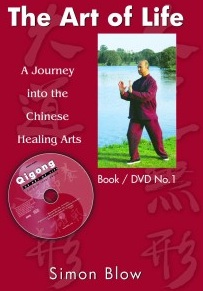 Meditation and Health
Meditation and Health 

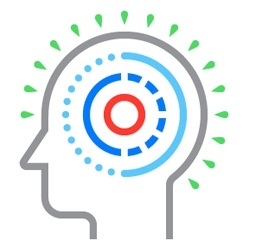



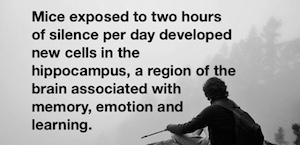
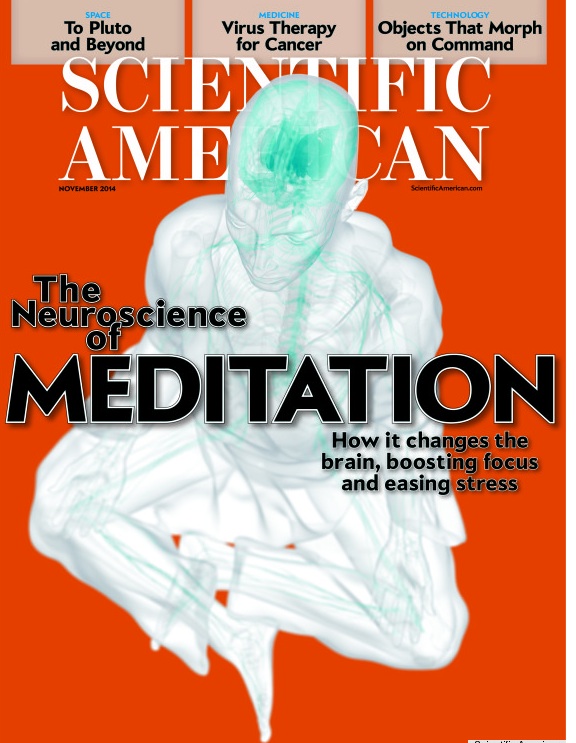 In 2013, the
In 2013, the